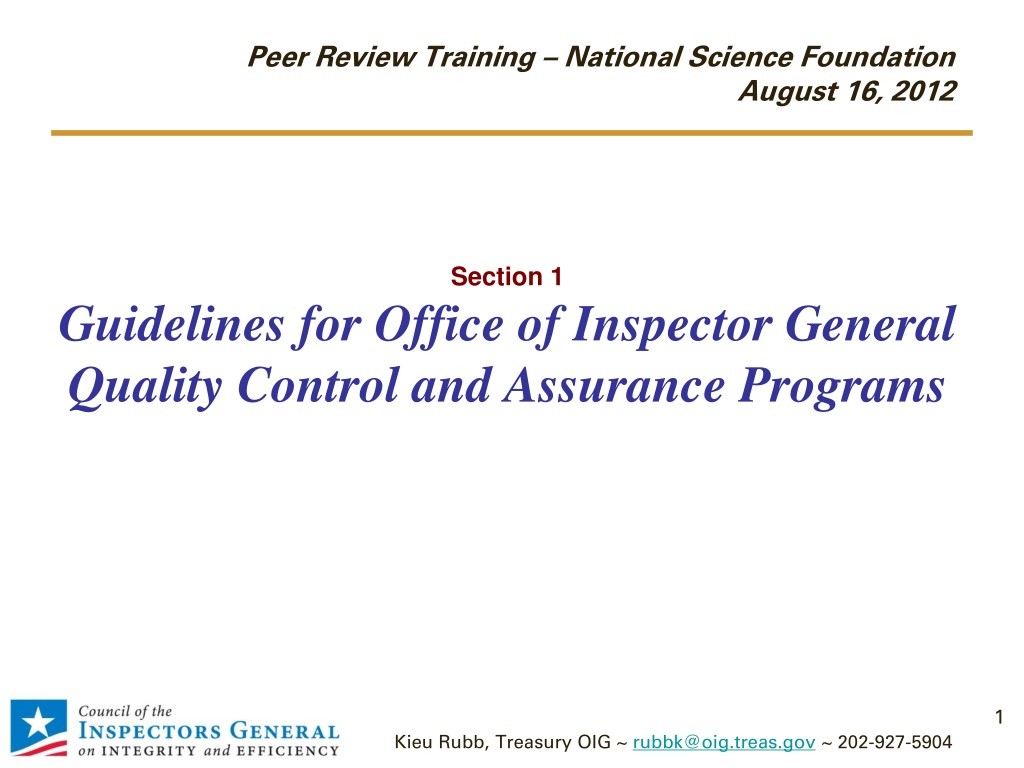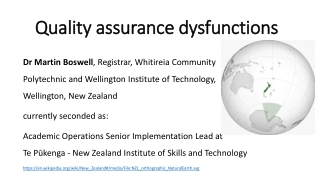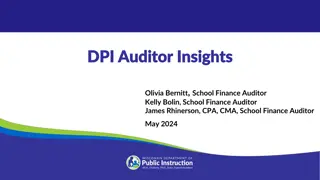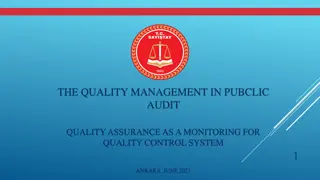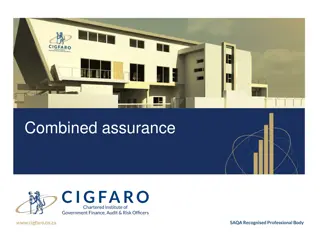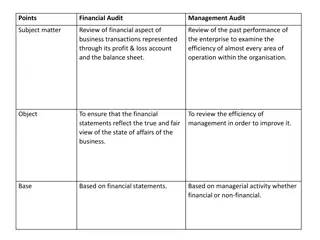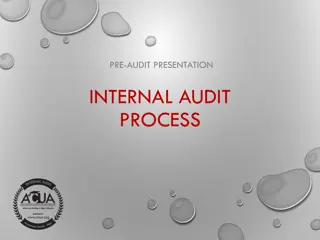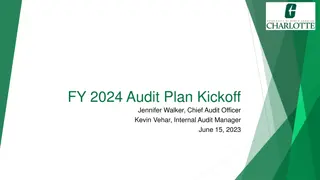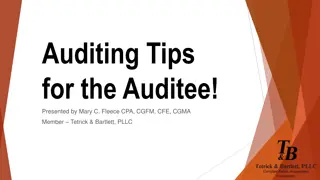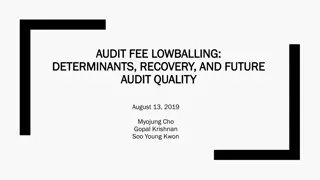Guidelines for Establishing Quality Control and Assurance Programs in Audit Organizations
The training session covers the purpose of Section 1, the system of quality control, peer review responsibilities, and the importance of having a quality assurance system in place to ensure compliance with professional standards and regulatory requirements. It discusses leadership, high-quality work, policies, and procedures within a QA system, as well as the structure and characteristics of an effective QA system. The training emphasizes the need for objective, timely, and comprehensive appraisal of operations with professional care in all reviews.
Uploaded on Nov 16, 2024 | 0 Views
Download Presentation

Please find below an Image/Link to download the presentation.
The content on the website is provided AS IS for your information and personal use only. It may not be sold, licensed, or shared on other websites without obtaining consent from the author. Download presentation by click this link. If you encounter any issues during the download, it is possible that the publisher has removed the file from their server.
E N D
Presentation Transcript
Peer Review Training National Science Foundation August 16, 2012 Section 1 Guidelines for Office of Inspector General Quality Control and Assurance Programs 1 Kieu Rubb, Treasury OIG ~ rubbk@oig.treas.gov ~ 202-927-5904
http://www.ignet .gov/pande/audit 1.html#guide 2009 Guide (.pdf format) 2009 Guide (.doc format) 2011 Revision (A, B, E, F) Slide 2
What Ill Talk About Today Purpose of Section 1 System of Quality Control Peer Review Responsibilities Questions 3
Purpose Guidance so audit organization has reasonable assurance of complying with professional standards and applicable legal and regulatory requirements: GAGAS SAS/SSAE OMB/GAO guidance OIG-related statutes Other laws and regulations 4
Whats in a QA System? Leadership High-quality work Policies, procedures, and monitoring 5
QA System Structure Different and depends on OIG s size Number of offices Geographic dispersion Personnel knowledge and experience Nature and complexity of work Cost-benefit considerations 6
Why Have a QA System? 2011 GAS 3.82 Ensure: Objective, timely, and comprehensive appraisal of operations Professional care with all reviews 7
QA System Characteristics Leadership responsibilities for quality in audit organization Independence, legal, and ethical requirements Initiation, acceptance, and continuation of engagements Human Resources - people have adequate skills, education, experience, and knowledge Engagements performance, documentation, and reporting Quality monitoring 8
Quality Monitoring Evaluate audit/attestations for: Adherence to professional standards and legal requirements Adequacy of the design of policies and procedures Staff compliance with quality control policies and procedures 9
Quality Monitoring Report annually: Results of monitoring Identify systemic issues for improvements Provide corrective actions 10
External Peer Review Team Team Captain should: Have sufficient expertise and authority Document proper supervision Report to appropriate individual or level 11
External Peer Review Team Team should Conduct risk assessment Give no advance notice Conduct sufficient testing Ensure positive and constructive process Obtain sufficient, appropriate evidence Determine compliance with standards, regulations, and policies and procedures Prepare written results Make recommendations and obtain written comments 12
External Peer Review Reviewed OIG should: Provide documentation Ensure positive and constructive process Provide written comments Implement appropriate corrective actions 13
Questions For questions or comments on the revised guide, contact APRG@oig.treas.gov. 14
